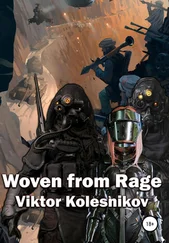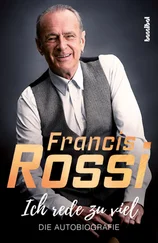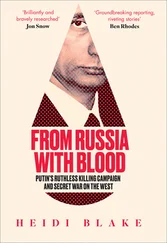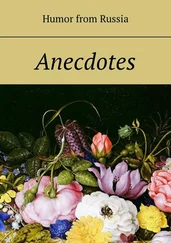Aethra names her son Theseus (“tokens deposited”). “Boy, it’s hot in here,” says visiting relative Heracles (Hercules), flinging off the skin of the Nemean lion he’s slain. Young Theseus and playmates enter, see lion. Playmates panic. Theseus attacks lion. “Brave lad.” Later, he invents wrestling.
When Theseus is sixteen, Aethra says, “I’ve got something to tell you.” Theseus lifts rock, retrieves sword and sandals, and sets out to see his father. He decides to take the overland route because it’s dangerous. He wants to be another Heracles.
Epidauris: Theseus kills the lame bandit Periphetes, who’d been dispatching tourists with a club of brass (or iron). Theseus confiscates the club (Heracles has one like it).
Isthmus of Corinth: Sinis likes to play games with people and trees. You bend this tree, see; then you tie… Theseus does unto Sinis what Sinis, etc.
Crommyon: Thesus kills a wild sow.
The Cliffs of Megaris: “Wash my feet,” the bandit Sciron (“parasol”) would say to passing strangers, and then he would punt them into the sea. Theseus does unto Sciron…
Eleusis: Cercyon likes to wrestle wayfarers to the death. Theseus invented wrestling, remember?
Corydallus: Procrustes has a long bed and a short bed (or one bed). He fits overnight guests to his bed(s) by racking or lopping. Theseus does unto Procrustes…
Cephissus River, Attica: Theseus has done unto so many that he takes time out for purification.
Temple of Apollo Delphinius (the Dolphin), Athens: Hard-hats building the temple make unseemly comments to Theseus, believing that our hero (in braids and white robe) is either a girl or gay. Theseus tosses their oxcart (or ox) over the temple.
The Palace, Athens: Aegeus has married Medea. She knows that Theseus is not just another stranger. If he’s who she thinks he is her child(ren) won’t get to sit on the throne. Medea to Aegeus about the Stranger: “He’s dangerous, poison him.” But Aegeus recognizes his token sword, knocks the poisoned cup to the ground. “My son!” General rejoicing. Medea and child(ren) take flight (she has a dragon-drawn chariot).
Months Later: Ambassadors from Crete come to Athens. “Well, here it is that time again. Where are the seven youths and seven maidens we need for the Minotaur’s dinner, in tribute for [another story] the murder of Androgeus?” (Cretan king Minos’ wife Pasiphaë and a white bull were the proud progenitors of a fine half-bull, half-human with a taste for all-human flesh.) Theseus says, “I’ll go with the gang and kill the Minotaur, Dad.” “Son, be careful. And for Zeus’ sake, change the black sails on this death ship to white ones if you’re successfull.” “Black sails to white — okay, Dad.”
Crete: Theseus boasts, “I’m a son of Poseidon.” “Who isn’t?” says Minos. “But prove it.” Minos tosses his ring into the sea. Theseus dives in and, with the help of Amphitrite and/or lesser Nereids, retrieves it, along with a golden (or jeweled) crown (“You have to lay it on thick with these Cretans”). Ariadne, Minos’ daughter, ever a softy for a showboat, gives Theseus a sword and a ball of string so that he can find his way through the Minotaur’s Labyrinth (built by Daedalus), kill it/him, and find his way out again.
All the baddies are killed; all the youths and maidens get away. Theseus abandons Ariadne on the island of Naxos. “I just can’t stand to be in anyone’s debt. Besides, Athena or Minerva or whatever her name is came to me in a dream and told me to do it. Now, was I supposed to change the sail if I was suc cess ful or un successful?”
Athens: Aegeus, seeing the black-sailed ship, flings himself into the sea — hence its name, Aegean.
White is the talismanic color in the Theseus legend, eight the magic number.
Further Adventures of the Hero: Theseus and the Amazons; Theseus and Phaedra and Hippolytus; Theseus and Pereithous and Helen and Hades.
Aegeus — Samuel Schwartz
Aethra — Helen Clark
Apollo Delphinius, Temple of — Apollo Theater
Ariadne — Adriana Minotti
Cephissus — Jordan Rivers’ sauna
Cercyon — Kirk
Heracles — Uncle Herbert
Medea — Mildred Schwartz
Minos — Minotti
Minotaur — Toro the dog
Pandion — Jacob Schwartz
Pasiphaé — Bovina Minotti
Periphetes — Perry the gonif
Phaea — Pig killed by taxi
Pittheus — James Clark
Procrustes — Manager of Kropotkin’s Shoe Store
Sciron — Parnell the pimp
Sinis — Joe Doe
Theseus — Oreo
Under the banner of the Black Arts movement that emerged as the cultural component of Black Power politics of the 1960s and 1970s, African American writers and artists struggled to define and practice a distinctive black aesthetic that departed from traditions based in the history and values of European cultures. The Black Arts movement was fueled by the desire to use art to recover — or, if necessary, to create or reinvent — an authentic black culture based in the particular historical experience of Americans of African descent.
Like the Harlem Renaissance of the 1920s and 1930s, the Black Arts movement resulted in an outpouring of music, art, and literature, and inspired many educated and middle-class African Americans to re-evaluate and to identify themselves more closely with the vernacular culture associated with the black proletariat. At its best, the Black Arts movement stimulated a creative exploration of the folk, popular, and fine art traditions of a community in which diversity and unity, innovation and preservation are interactive forces. At its worst, in their eagerness to purge black identity of all traces of Europe, some critics and theorists proposed narrow prescriptions for black art that resulted in formulaic expression from some artists. Even this served to provoke others to question and transgress the limits, while the thorough exploration of blackness not only contributed to the collective self-knowledge of African Americans, but also helped to redefine the culture of the United States as a hybrid multicultural gumbo rather than a white monocultural melting pot.
Paradoxically, as much as it was concerned with defining the cultural distinctiveness of African Americans, the Black Arts movement also helped to create unprecedented opportunities for the creative expression of African Americans to enter and influence “mainstream” American culture. Sometimes the more “black rage” was vented in the work, the more the writer was celebrated in the mainstream culture. In addition to this tense interaction of political, aesthetic, and commercial impulses, another contradiction that the Black Arts movement posed for authors was the idea that black Americans possessed no authentic literature or language of their own. Writers wrestled with the dilemma that they were severed from the spoken languages and oral traditions of their African ancestors, and had no intrinsic connection to the language and literature of their historical oppressors. The English language itself was perceived by some as a tool of oppression. The more fluent in standard English, or other European languages, the more immersed in established literary culture, the more likely one might be accused of forsaking one’s own traditions, or abandoning the black community — by writing works it could not comprehend, or enjoy, or draw upon for inspiration in the coming revolution that radical activists envisioned.
Fran Ross’s novel, Oreo , was published in 1974, when the Black Arts movement had reached the height of its influence. Yet, as its title signals, Oreo does not claim to represent any singularly authentic black experience. More eccentric than Afrocentric, Ross’s novel calls attention to the hybridity rather than the racial or cultural purity of African Americans. Ross’s playfully innovative novel displays a discursive spectrum engaged in by African American characters who express themselves in a variety of languages and dialects, including standard English, African American vernacular, and Yiddish.
Читать дальше












